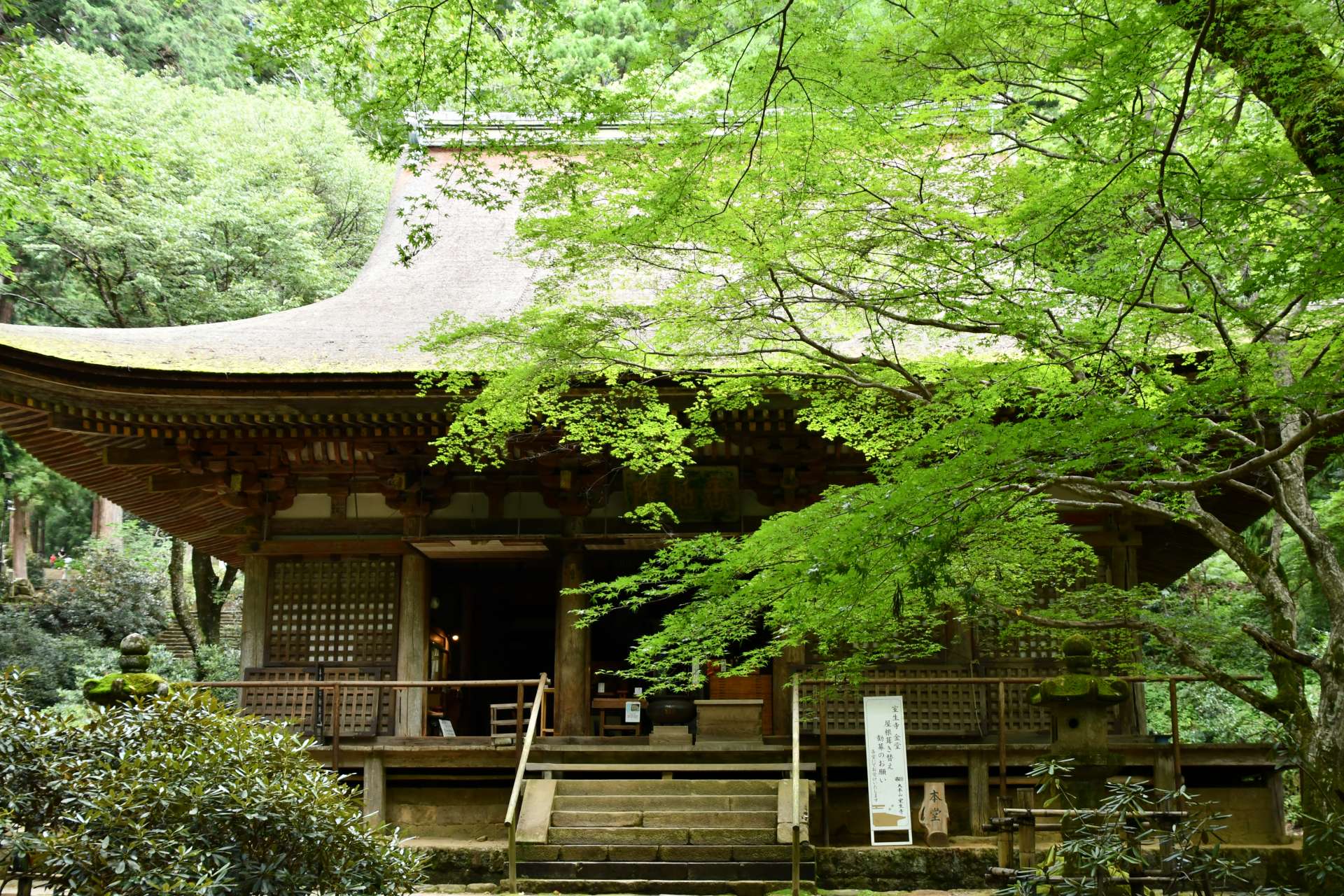早期高野山是禁止女人進入,唯有室生寺特別允許,才有女人高野的名稱。

Verified [Verified] denotes information that has been published with confirmation of its owing parties.
Nyonin Koya, Murouji Temple
This is the head temple of the Murouji sect of the Shingon school. In contrast to Mt. Koya, which prohibited women, it welcomed them to visit, so it is called “Nyonin Koya”, which means Koya for women, and many women still visit here today.
Murou is surrounded by mountains and clear streams, it has been said to be a sacred place of worship for the water god and dragon god since ancient times. Kenkei, a monk of Kofukuji Temple, had Murouji temple built in the late Nara period to pray for the healing of Prince Yamabe’s illness, who later became Emperor Kanmu. In contrast to Mt. Koya, which prohibited women from visiting, Murouji Temple allowed women to visit despite being part of the Shingon school, and it has been called “Nyonin Koya'' since the Kamakura period. The temple declined once, but was rebuilt during the Edo period under the patronage of Keishoin, the mother of 5th shogun Tokugawa Tsunayoshi, and has been worshipped as “Nyonin Koya” throughout Japan.
Due to the distance from the former capital, a distinct Buddhist culture has matured. A number of Buddhist statues representing the early Heian period, including those with a carved drapery design known as the Murouji style, have been designated as national treasures and important cultural properties, and they have a mysterious beauty in harmony with the surrounding nature. In 2020, the treasure hall, which houses Buddhist statues and other treasures, was opened.
The 16-meter-high five-story pagoda is Japan's smallest outdoor pagoda. This is the oldest historical building on the premises, built in the late Nara period, and is designated as a national treasure site. It attracts visitors due to its exquisite appearance. From mid-April to early May, approximately 3,000 rhododendrons bloom along with the stone steps, enhancing the charm of the five-story pagoda. At the “Okuno-in”, at the top of 700 stone steps from the five-story pagoda, the “Miedo Hall”, where Kobo-Daishi Kukai is enshrined, is opened on the 21st of each month, and visitors can see the statue of Kukai in the beautiful nature.
Highlights
-
The temple has been worshipped by women since the Kamakura period.
-
A distinct Buddhist art has matured and the beauty of the Buddhist statues is in harmony with the natural surroundings.
-
The five-story pagoda is Japan’s smallest outdoor pagoda, and attracts visitors with its elegance.
-
It is famous for its rhododendrons. The temple grounds will be covered with approximately 3,000 rhododendrons from mid-April to early May.
Photos
-
![Front gate, Omote-mon]()
Front gate, Omote-mon
-
![The main hall, Hondo]()
The main hall, Hondo
-
![Okuno-in Miedo Hall]()
Okuno-in Miedo Hall
Reviews
-
Peter Wang
Details
- Name in Japanese
- 女人高野 室生寺
- Postal Code
- 633-0421
- Address
- 78 Muro, Uda City, Nara
- Telephone
- 0745-93-2003
- Holiday
- Open every day
- Hours
-
9:00am-4:00pm
*Treasure Hall 9:30am-3:30pm (last entry 3:00pm) - Admission
- Adults (middle schooler and older) 600 yen, Elementary students 400 yen
- Directions
- Take the Nara Kotsu bus from Muroguchi-Ono Station on the Kintetsu Osaka Line for 14 minutes
- Credit Cards
- Not accepted
- Official Website
- Official Website (English)



